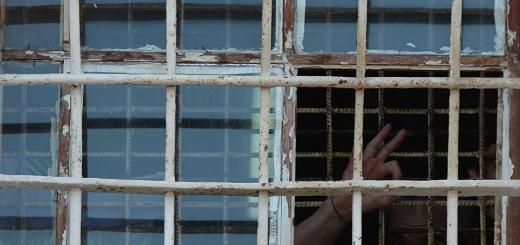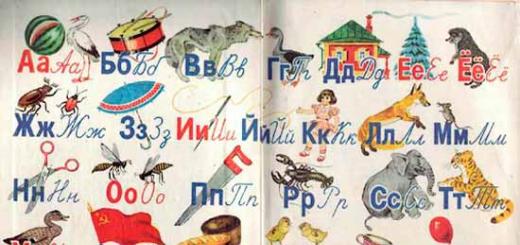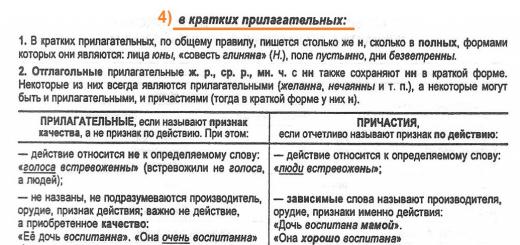Ekaterina Popandopoulos
Lesson summary for preparatory age children on FEMP “According to the Laws of Archimedes”
Integration + artistic and aesthetic development.
Facilities and equipment: jug of water, rubber ball, paper circles, floor a game: "Compass"
Preliminary work: view cartoon: “Kolya, Olya, Archimedes» .
Target: introduce experience Archimedes by measuring body volume.
Tasks:
ABOUT: learn children measure the volume of liquid and bulk substances using a conventional measure, consolidate the ability children navigate by map.
R: develop the idea that the result of a measurement (length, weight, volume of objects) depends on the size of the conditional measure.
IN: cultivate the ability to work in a team, a friendly attitude towards each other.
Progress of the lesson
Children receive a pictogram using two circles, children decipher the word geometer.
Questions for children Answers children
What word did you get? Geometer
Who is a geometer, what did he do? a scientist in geometry, he made discoveries.
What great scientist do you know?
-Archimedes
The teacher invites the children to go on a trip to the city of Syracuse. Children are invited to travel in a time machine.
To go on a trip, we need to start the time machine. The start button consists of several segments, we must start the countdown from a number equal to the number of these segments. (Children determine its quantitative composition by overlapping segments and write the number 6).
Children count backwards from 6.
A slide of a cartoon fragment appears on the screen “Kolya, Olya, Archimedes»
The teacher invites the children to watch an experiment with water, telling about one of the discoveries Archimedes.
Children repeat this experiment, using different bodies, immersing them in water, making notes in accordance with the marks, with an experience sheet card.
Sand water changed +1
Magnets+1
After the experiment, the children are again shown fragments of the cartoon dedicated to this discovery.
Children are offered a game: "Compass" in order to get to the laboratory Archimedes.
The teacher gives an algorithm for the task. Children visit an exhibition of objects related to discoveries Archimedes(mixer paddle, screw, drill, regular slingshot, catapult and LEGO set). The teacher explains that labor Archimedes not forgotten and still in use, invites children to assemble LEGO designer model, which uses a crane.
Children count in order to 6 and end up in kindergarten.
IN: Guys, here we are in kindergarten. I suggest you rest. I'm showing you, repeat after me.
We do gymnastics for the eyes
We do it every time
Right, left, around, down
Don’t be lazy to repeat.
Strengthening the eye muscles
We'll see right away.
IN: Guys, well done. Did you enjoy our trip?
D: Yes
IN: What do you remember?
D: conducted experiments, deciphered the word.
IN: I’m very glad that you learned a lot of new things, and most importantly, you found it interesting.
Publications on the topic:
Summary of the lesson “An amazing journey through the “Four Elements” for preparatory age Topic: “An amazing journey through the “Four Elements”.” Goal: Formation of a holistic picture of the world, broadening the horizons of children.
Didactic game for children of preparatory age “Guests of St. Petersburg”"Guests of St. Petersburg" Didactic game "Guests of St. Petersburg." Didactic task. 1. Clarify and consolidate children’s knowledge about attractions.
Summary of the final GCD in mathematics for children of preparatory age for school Summary of continuous educational activities in mathematics (final) for children of preparatory age for school Priority educational.
Summary of educational activities for speech development “Toys” for children of preparatory age Goal: Enrichment and activation of vocabulary on the topic. Objectives: 1. Correctional teaching to clarify, expand and activate the vocabulary on the topic.
Summary of an open lesson on familiarization with the environment “Visiting Lesovichok” for older and preparatory children Goal: 1. To form a future respectful attitude towards all living things, a conscious attitude towards life. 2. Expand the horizons of children's knowledge about.
Summary of a tourist trip for children of preparatory age “Where does health hide?” Developed and conducted by a physical instructor.
Topic: My native land, I love you! Goal: To form in a child a sense of belonging to a small homeland: hometown, Program region.
Archimedes- Greek mechanic, physicist, mathematician, engineer. Born in Syracuse (Sicily). His father Phidias was an astronomer and mathematician. The father was involved in the upbringing and education of his son. From him Archimedes inherited his abilities in mathematics, astronomy and mechanics. Archimedes studied in Alexandria (Egypt), which at that time was a cultural and scientific center. There he met Eratosthenes- a Greek mathematician, astronomer, geographer and poet, who became Archimedes' mentor and patronized him for a long time.
Archimedes combined the talents of an engineer-inventor and a theoretical scientist. He became the founder of theoretical mechanics and hydrostatics, developed methods for finding surface areas and volumes of various figures and bodies.
According to legend, Archimedes owned many amazing technical inventions that won him fame among his contemporaries. It is believed that Archimedes, with the help of mirrors and reflection of the sun's rays, was able to set fire to the Roman fleet that was besieging Alexandria. This case is a clear example of excellent optical skills.
Archimedes is also credited with the invention of the catapult, a military throwing machine, and the construction of a planetarium in which the planets moved. The scientist created a screw for lifting water (Archimedes screw), which is still in use and is a water-lifting machine, a shaft with a screw surface located in an inclined pipe immersed in water. During rotation, the helical surface of the shaft moves water through the pipe to different heights.
 Archimedes wrote many scientific works: “On spirals”, “On conoids and spheroids”, “On the ball and cylinder”, “On levers”, “On floating bodies”. And in his treatise “On Grains of Sand,” he calculated the number of grains of sand in the volume of the globe.
Archimedes wrote many scientific works: “On spirals”, “On conoids and spheroids”, “On the ball and cylinder”, “On levers”, “On floating bodies”. And in his treatise “On Grains of Sand,” he calculated the number of grains of sand in the volume of the globe.
Archimedes discovered his famous law under interesting circumstances. King Gyreon II, whom Archimedes served, wanted to know whether the jewelers mixed silver with gold when they made the crown. To do this, it is necessary to determine not only the mass, but the volume of the crown in order to calculate the density of the metal. Determine the volume of an irregularly shaped product – a difficult task that Archimedes pondered for a long time.
 The solution came to Archimedes' mind when he immersed himself in the bath: the water level in the bath rose after the scientist's body was lowered into the water. That is, the volume of his body displaced an equal volume of water. With a cry of “Eureka!” Archimedes ran into the palace without even bothering to get dressed. He lowered the crown into the water and determined the volume of displaced liquid. The problem was solved!
The solution came to Archimedes' mind when he immersed himself in the bath: the water level in the bath rose after the scientist's body was lowered into the water. That is, the volume of his body displaced an equal volume of water. With a cry of “Eureka!” Archimedes ran into the palace without even bothering to get dressed. He lowered the crown into the water and determined the volume of displaced liquid. The problem was solved!
Thus, Archimedes discovered the principle of buoyancy. If a solid body is immersed in a liquid, it will displace a volume of liquid equal to the volume of the part of the body immersed in the liquid. A body can float in water if its average density is less than the density of the liquid in which it was placed.
Archimedes' law states: any body immersed in a liquid or gas is acted upon by a buoyant force directed upward and equal to the weight of the liquid or gas displaced by it.
website, when copying material in full or in part, a link to the source is required.
The buoyant force acting on a body immersed in a liquid is equal to the weight of the liquid displaced by it.
"Eureka!" (“Found!”) - this is the exclamation, according to legend, made by the ancient Greek scientist and philosopher Archimedes, who discovered the principle of repression. Legend has it that the Syracusan king Heron II asked the thinker to determine whether his crown was made of pure gold without harming the royal crown itself. It was not difficult to weigh the crown of Archimedes, but this was not enough - it was necessary to determine the volume of the crown in order to calculate the density of the metal from which it was cast and determine whether it was pure gold.
Then, according to legend, Archimedes, preoccupied with thoughts about how to determine the volume of the crown, plunged into the bath - and suddenly noticed that the water level in the bath had risen. And then the scientist realized that the volume of his body displaced an equal volume of water, therefore, the crown, if lowered into a basin filled to the brim, would displace a volume of water equal to its volume. A solution to the problem was found and, according to the most common version of the legend, the scientist ran to report his victory to the royal palace, without even bothering to get dressed.
However, what is true is true: it was Archimedes who discovered buoyancy principle. If a solid body is immersed in a liquid, it will displace a volume of liquid equal to the volume of the part of the body immersed in the liquid. The pressure that previously acted on the displaced liquid will now act on the solid body that displaced it. And, if the buoyant force acting vertically upward turns out to be greater than the force of gravity pulling the body vertically downward, the body will float; otherwise it will sink (drown). In modern language, a body floats if its average density is less than the density of the liquid in which it is immersed.
Archimedes' principle can be interpreted in terms of molecular kinetic theory. In a fluid at rest, pressure is produced by the impacts of moving molecules. When a certain volume of liquid is displaced by a solid body, the upward impulse of the collisions of molecules will fall not on the liquid molecules displaced by the body, but on the body itself, which explains the pressure exerted on it from below and pushing it towards the surface of the liquid. If the body is completely immersed in the liquid, the buoyant force will continue to act on it, since the pressure increases with increasing depth, and the lower part of the body is subjected to more pressure than the upper, which is where the buoyant force arises. This is the explanation of buoyant force at the molecular level.
This pushing pattern explains why a ship made of steel, which is much denser than water, remains afloat. The fact is that the volume of water displaced by a ship is equal to the volume of steel submerged in water plus the volume of air contained inside the ship's hull below the waterline. If we average the density of the shell of the hull and the air inside it, it turns out that the density of the ship (as a physical body) is less than the density of water, therefore the buoyancy force acting on it as a result of upward impulses of impact of water molecules turns out to be higher than the gravitational force of attraction of the Earth, pulling the ship towards to the bottom - and the ship floats.
Nick. Gorkavy
Other scientific tales Nick. Gorkavoy were published in the journal “Science and Life” in 2010-2013.
Domenico Fetti. Archimedes is thinking. 1620 Painting from the Old Masters Gallery, Dresden.
Edward Vimon. Death of Archimedes. 1820s.
Tomb of Archimedes in Syracuse. Photo: Codas2.
Ortygia Island, the historical center of Syracuse, the hometown of Archimedes. On these shores, Archimedes burned and sank Roman galleys. Photo: Marcos90.
Greek Theater in Syracuse. Photo: Victoria|photographer_location_London, UK.
Archimedes turns the Earth over with a lever. Ancient engraving. 1824
The image of Archimedes on the Fields Gold Medal, the highest honor given to mathematicians. The inscription in Latin: “Transire suum pectus mundoque potiri” - “To transcend your human limitations and conquer the Universe.” Photo by Stefan Zachov.
Each new tale of the writer and astrophysicist, doctor of physical and mathematical sciences Nikolai Nikolaevich Gorkavy (Nick. Gorkavy) is a story about how important discoveries were made in one or another field of science. And it is no coincidence that the heroes of his popular science novels and fairy tales were Princess Dzintara and her children - Galatea and Andrei, because they are from the breed of those who strive to “know everything”. The stories told by Dzintara to children were included in the collection “Star Vitamin”. It turned out to be so interesting that readers demanded a continuation. We invite you to familiarize yourself with some fairy tales from the future collection “The Makers of Times.” Here is the first publication.
The greatest scientist of the ancient world, the ancient Greek mathematician, physicist and engineer Archimedes (287-212 BC) was from Syracuse - a Greek colony on the largest island of the Mediterranean - Sicily. The ancient Greeks, the creators of European culture, settled there almost three thousand years ago - in the 8th century BC, and by the time of the birth of Archimedes, Syracuse was a thriving cultural city, home to its philosophers and scientists, poets and orators.
The stone houses of the townspeople surrounded the palace of the king of Syracuse, Hieron II, and high walls protected the city from enemies. Residents loved to gather in stadiums, where runners and discus throwers competed, and in bathhouses, where they not only washed, but relaxed and exchanged news.
That day, the baths on the main square of the city were noisy - laughter, screams, splashing water. Young people swam in a large pool, and older people, holding silver goblets of wine in their hands, had a leisurely conversation on comfortable couches. The sun peeked into the courtyard of the baths, illuminating the doorway leading to a separate room. In it, in a small pool that looked like a bathtub, sat alone a man who behaved completely differently from the others. Archimedes - and it was he - closed his eyes, but by some elusive signs it was clear that this man was not sleeping, but was thinking intensely. In recent weeks, the scientist became so deep in his thoughts that he often forgot even about food and his family had to make sure that he did not go hungry.
It began with the fact that King Hieron II invited Archimedes to his palace, poured him the best wine, asked about his health, and then showed him a gold crown made for the ruler by the court jeweler.
“I don’t know much about jewelry, but I do know about people,” Hieron said. - And I think that the jeweler is deceiving me.
The king took a gold bar from the table.
I gave him the exact same ingot and he made a crown out of it. The weight of the crown and the ingot are the same, my servant checked this. But I still have doubts: is there silver mixed into the crown? You, Archimedes, are the greatest scientist of Syracuse, and I ask you to check this, because if the king puts on a false crown, even the street boys will laugh at him...
The ruler handed the crown and ingot to Archimedes with the words:
If you answer my question, you will keep the gold for yourself, but I will still be your debtor.
Archimedes took the crown and the gold bar, left the royal palace, and from then on lost peace and sleep. If he can’t solve this problem, then no one can either. Indeed, Archimedes was the most famous scientist of Syracuse, studied in Alexandria, was friends with the head of the Library of Alexandria, mathematician, astronomer and geographer Eratosthenes and other great thinkers of Greece. Archimedes became famous for his many discoveries in mathematics and geometry, laid the foundations of mechanics, and was responsible for several outstanding inventions.
The puzzled scientist came home, put the crown and the ingot on the scales, lifted them by the middle and made sure that the weight of both objects was the same: the bowls swayed at the same level. Archimedes knew the density of pure gold; he had to find out the density of the crown (weight divided by volume). If there is silver in the crown, its density should be less than that of gold. And since the weights of the crown and the ingot are the same, then the volume of the false crown should be greater than the volume of the gold ingot. The volume of the ingot can be measured, but how can one determine the volume of the crown, which has so many complexly shaped teeth and petals? This problem tormented the scientist. He was an excellent geometer, for example, he solved a difficult problem - determining the area and volume of a sphere and a cylinder circumscribed around it, but how to find the volume of a body of complex shape? A fundamentally new solution is needed.
Archimedes came to the bathhouse to wash off the dust of a hot day and refresh his head, tired from thinking. Ordinary people, while bathing in a bathhouse, could chat and chew figs, but Archimedes’ thoughts about the unsolved problem did not leave him either day or night. His brain searched for a solution, clinging to any clue.
Archimedes took off his chiton, put it on the bench and walked up to the small pool. Water splashed in it three fingers below the edge. When the scientist plunged into the water, its level rose noticeably, and the first wave even splashed onto the marble floor. The scientist closed his eyes, enjoying the pleasant coolness. Thoughts about the volume of the crown habitually swirled in my head.
Suddenly Archimedes felt that something important had happened, but could not understand what. He opened his eyes in annoyance. Voices and someone's heated argument were heard from the direction of the large pool - it seemed about the last law of the ruler of Syracuse. Archimedes froze, trying to understand what had happened? He looked around: the water in the pool did not reach the edge by only one finger, and yet when he entered the water, its level was lower.
Archimedes stood up and left the pool. When the water calmed down, she was again three fingers below the edge. The scientist climbed into the pool again - the water obediently rose. Archimedes quickly estimated the size of the pool, calculated its area, then multiplied it by the change in water level. It turned out that the volume of water displaced by his body is equal to the volume of the body, if we assume that the densities of water and the human body are almost the same and each cubic decimeter, or a cube of water with a side of ten centimeters, can be equated to a kilogram of the weight of the scientist himself. But during the dive, Archimedes’ body lost weight and floated in the water. In some mysterious way, the water displaced by the body took away his weight...
Archimedes realized that he was on the right path, and inspiration carried him on its mighty wings. Is it possible to apply the found law on the volume of displaced fluid to the crown? Certainly! You need to lower the crown into water, measure the increase in the volume of liquid, and then compare it with the volume of water displaced by the gold bar. Problem solved!
According to legend, Archimedes, with a victorious cry of “Eureka!”, which means “Found!” in Greek, jumped out of the pool and, forgetting to put on his chiton, rushed home. I urgently needed to check my decision! He ran through the city, and the residents of Syracuse waved their hands at him in greeting. Still, it’s not every day that the most important law of hydrostatics is discovered, and it’s not every day that you can see a naked man running through the central square of Syracuse.
The next day the king was informed about the arrival of Archimedes.
“I solved the problem,” said the scientist. - There really is a lot of silver in the crown.
How did you know this? - the ruler asked.
Yesterday, in the baths, I guessed that a body that is immersed in a pool of water displaces a volume of liquid equal to the volume of the body itself, and at the same time loses weight. Returning home, I conducted many experiments with scales immersed in water, and proved that a body in water loses exactly as much weight as the liquid it displaces weighs. Therefore, a person can swim, but a gold bar cannot, but it still weighs less in water.
And how does this prove the presence of silver in my crown? - asked the king.
“Tell me to bring a vat of water,” Archimedes asked and took out the scales. While the servants were dragging the vat to the royal chambers, Archimedes put the crown and the ingot on the scales. They balanced each other.
If there is silver in the crown, then the volume of the crown is greater than the volume of the ingot. This means that when immersed in water, the crown will lose more weight and the scales will change their position,” said Archimedes and carefully immersed both scales in the water. The bowl with the crown immediately rose up.
You are truly a great scientist! - exclaimed the king. - Now I can order a new crown for myself and check whether it is real or not.
Archimedes hid a grin in his beard: he understood that the law he had discovered the day before was much more valuable than a thousand golden crowns.
Archimedes' law has remained in history forever; it is used when designing any ships. Hundreds of thousands of ships ply the oceans, seas and rivers, and each of them floats on the surface of the water thanks to the force discovered by Archimedes.
When Archimedes grew old, his measured studies in science suddenly ended, as did the quiet life of the townspeople - the rapidly growing Roman Empire decided to conquer the fertile island of Sicily.
In 212 BC. a huge fleet of galleys filled with Roman soldiers approached the island. The advantage in strength of the Romans was obvious, and the commander of the fleet had no doubt that Syracuse would be captured very quickly. But that was not the case: as soon as the galleys approached the city, powerful catapults struck from the walls. They threw heavy stones so accurately that the invaders' galleys were shattered into splinters.
The Roman commander was not at a loss and commanded the captains of his fleet:
Come to the very walls of the city! At close range, catapults will not be afraid of us, and archers will be able to shoot accurately.
When the fleet, with losses, broke through to the city walls and prepared to storm it, a new surprise awaited the Romans: now light throwing vehicles pelted them with a hail of cannonballs. The lowering hooks of powerful cranes grabbed the Roman galleys by the bows and lifted them into the air. The galleys overturned, fell down and sank.
The famous ancient historian Polybius wrote about the assault on Syracuse: “The Romans could quickly take possession of the city if someone had removed one old man from among the Syracusans.” This old man was Archimedes, who designed throwing machines and powerful cranes to protect the city.
The quick capture of Syracuse failed, and the Roman commander gave the command to retreat. The greatly reduced fleet retreated to a safe distance. The city held firm thanks to the engineering genius of Archimedes and the courage of the townspeople. The scouts reported to the Roman commander the name of the scientist who created such an impregnable defense. The commander decided that after the victory he needed to get Archimedes as the most valuable military trophy, because he alone was worth an entire army!
Day after day, month after month, men stood guard on the walls, shot with bows and loaded catapults with heavy stones, which, alas, did not reach their target. The boys brought water and food to the soldiers, but they were not allowed to fight - they were still too young!
Archimedes was old, he, like children, could not shoot from a bow as far as young and strong men, but he had a powerful brain. Archimedes gathered the boys and asked them, pointing to the enemy galleys:
Want to destroy the Roman fleet?
We are ready, tell us what to do!
The wise old man explained that he would have to work hard. He ordered each boy to take a large copper sheet from the already prepared pile and place it on smooth stone slabs.
Each of you must polish the sheet so that it shines in the sun like gold. And then tomorrow I will show you how to sink Roman galleys. Work, friends! The better you polish the copper today, the easier it will be for us to fight tomorrow.
Will we fight ourselves? - asked the little curly boy.
Yes,” Archimedes said firmly, “tomorrow you will all be on the battlefield along with the soldiers.” Each of you will be able to accomplish a feat, and then legends and songs will be written about you.
It is difficult to describe the enthusiasm that gripped the boys after Archimedes' speech, and they energetically began polishing their copper sheets.
The next day, at noon, the sun burned scorchingly in the sky, and the Roman fleet stood motionless at anchor in the outer roadstead. The wooden sides of the enemy galleys heated up in the sun and oozed resin, which was used to protect the ships from leaks.
Dozens of teenagers gathered on the fortress walls of Syracuse, where enemy arrows could not reach. In front of each of them stood a wooden shield with a polished copper sheet. The shield supports were made so that the copper sheet could be easily turned and tilted.
“Now we’ll check how well you polished the copper,” Archimedes addressed them. - I hope everyone knows how to make sunbeams?
Archimedes approached the little curly-haired boy and said:
Catch the sun with your mirror and direct the sunbeam into the middle of the side of the large black galley, just under the mast.
The boy rushed to carry out the instructions, and the warriors crowded on the walls looked at each other in surprise: what else was the cunning Archimedes up to?
The scientist was pleased with the result - a spot of light appeared on the side of the black galley. Then he turned to the other teenagers:
Point your mirrors at the same place!
Wooden supports creaked, copper sheets rattled - a flock of sunbeams ran towards the black galley, and its side began to fill with bright light. The Romans poured onto the decks of the galleys - what was happening? The commander-in-chief came out and also stared at the sparkling mirrors on the walls of the besieged city. Gods of Olympus, what else did these stubborn Syracusans come up with?
Archimedes instructed his army:
Keep your eyes on the sunbeams - let them always be directed to one place.
Not even a minute had passed before smoke began to billow from a shining spot on board the black galley.
Water, water! - the Romans shouted. Someone rushed to draw sea water, but the smoke quickly gave way to flames. The dry, tarred wood burned beautifully!
Move the mirrors to the adjacent galley on the right! - Archimedes commanded.
In a matter of minutes, the neighboring galley also began to fire. The Roman naval commander came out of his stupor and ordered to weigh anchor in order to move away from the walls of the cursed city with its main defender Archimedes.
Unfastening the anchors, putting the rowers on the oars, turning the huge ships around and taking them out to sea at a safe distance is not a quick task. While the Romans were running hecticly along the decks, choking from the choking smoke, the young Syracusans were transferring mirrors to new ships. In the confusion, the galleys came so close to each other that the fire spread from one ship to another. In their haste to set sail, some ships unfurled their sails, which, as it turned out, burned no worse than the tar sides.
Soon the battle was over. Many Roman ships burned out in the roadstead, and the remnants of the fleet retreated from the city walls. There were no losses among the young army of Archimedes.
Glory to the great Archimedes! - the delighted residents of Syracuse shouted and thanked and hugged their children. A mighty warrior in shining armor firmly shook the curly-haired boy's hand. His small palm was covered with bloody calluses and abrasions from polishing the copper sheet, but he did not even wince when shaking hands.
Well done! - the warrior said respectfully. “The people of Syracuse will remember this day for a long time.”
Two millennia passed, but this day remained in history, and not only the Syracusans remembered it. Residents of different countries know the amazing story of Archimedes burning Roman galleys, but he alone would not have done anything without his young assistants. By the way, quite recently, already in the twentieth century AD, scientists conducted experiments that confirmed the full functionality of the ancient “superweapon” invented by Archimedes to protect Syracuse from invaders. Although there are historians who consider this a legend...
Oh, it's a pity I wasn't there! - exclaimed Galatea, who was listening attentively with her brother to the evening fairy tale that their mother, Princess Dzintara, was telling them. She continued reading the book:
Having lost hope of capturing the city by force of arms, the Roman commander resorted to the old tried and tested method - bribery. He found traitors in the city, and Syracuse fell. The Romans stormed into the city.
Find me Archimedes! - ordered the commander. But the soldiers, intoxicated by victory, did not understand well what he wanted from them. They broke into houses, robbed and killed. One of the warriors ran out to the square where Archimedes was working, drawing a complex geometric figure in the sand. Soldiers' boots trampled the fragile drawing.
Don't touch my drawings! - Archimedes said menacingly.
The Roman did not recognize the scientist and struck him with a sword in anger. This is how this great man died.
Archimedes' fame was so great that his books were often rewritten, thanks to which a number of works have survived to this day, despite the fires and wars of two millennia. The history of the books of Archimedes that have come down to us was often dramatic. It is known that in the 13th century, some ignorant monk took the book of Archimedes, written on durable parchment, and washed away the formulas of the great scientist in order to get blank pages to write down prayers. Centuries passed, and this prayer book fell into the hands of other scientists. Using a strong magnifying glass, they examined its pages and discerned traces of the erased precious text of Archimedes. The book of the brilliant scientist was restored and printed in large quantities. Now it will never disappear.
Archimedes was a real genius who made many discoveries and inventions. He was ahead of his contemporaries not even by centuries - by millennia.
In the book “Psammitus, or Calculus of Grains of Sand,” Archimedes retold the bold theory of Aristarchus of Samos, according to which the great Sun is located in the center of the world. Archimedes wrote: “Aristarchus of Samos... believes that the fixed stars and the Sun do not change their place in space, that the Earth moves in a circle around the Sun, located at its center...” Archimedes considered the heliocentric theory of Samos convincing and used it to estimate the size spheres of fixed stars. The scientist even built a planetarium, or “celestial sphere,” where one could observe the movement of the five planets, the rising of the sun and moon, its phases and eclipses.
The rule of leverage, which Archimedes discovered, became the basis of all mechanics. And although the lever was known before Archimedes, he outlined its complete theory and successfully applied it in practice. In Syracuse, he single-handedly launched the new multi-deck ship of the king of Syracuse, using an ingenious system of blocks and levers. It was then, appreciating the full power of his invention, that Archimedes exclaimed: “Give me a fulcrum, and I will turn the world around.”
Archimedes' achievements in the field of mathematics, which, according to Plutarch, he was simply obsessed with, are invaluable. His main mathematical discoveries relate to mathematical analysis, where the scientist’s ideas formed the basis of integral and differential calculus. The ratio of the circumference of a circle to its diameter, calculated by Archimedes, was of great importance for the development of mathematics. Archimedes gave an approximation for the number π (Archimedean number):
The scientist considered his highest achievement to be his work in the field of geometry and, above all, the calculation of a ball inscribed in a cylinder.
What kind of cylinder and ball? - asked Galatea. - Why was he so proud of them?
Archimedes was able to show that the area and volume of a sphere are related to the area and volume of the described cylinder as 2:3.
Dzintara rose and removed from the shelf a model of the globe, which was soldered inside a transparent cylinder so that it was in contact with it at the poles and at the equator.
I have loved this geometric toy since childhood. Look, the area of the ball is equal to the area of four circles of the same radius or the area of the side of a transparent cylinder. If you add the areas of the base and top of the cylinder, it turns out that the area of the cylinder is one and a half times the area of the ball inside it. The same relationship holds for the volumes of a cylinder and a sphere.
Archimedes was delighted with the result. He knew how to appreciate the beauty of geometric figures and mathematical formulas - that is why it is not a catapult or a burning galley that adorns his grave, but the image of a ball inscribed in a cylinder. Such was the desire of the great scientist.
Issue 8In a physics video lesson from the Academy of Entertaining Sciences, Professor Daniil Edisonovich will talk about the ancient Greek scientist Archimedes and some of his amazing discoveries. How do you know if gold is pure? How do multi-ton ships manage to float on ocean waves? Our life is full of mysterious phenomena and tricky puzzles. Physics can provide clues to some of them. After watching the eighth physics video lesson, you will become acquainted with Archimedes' law and Archimedes' force, as well as the history of their discovery.
Archimedes' Law
Why do objects weigh less in water than on land? For a person, being in water is comparable to being in a state of weightlessness. Astronauts use this in their training. But why does this happen? The fact is that bodies immersed in water are subject to a buoyancy force, discovered by the ancient Greek philosopher Archimedes. Archimedes' law goes like this: a body immersed in a liquid loses as much weight as the volume of water it displaces weighs. The buoyancy force was called Archimedes, in honor of the discoverer. Archimedes was one of the greatest scientists of Ancient Greece. This brilliant mathematician and mechanic lived in Syracuse in the 3rd century BC. e. At this time, King Hiero ruled in Syracuse. One day, Hieron, having received the golden crown he had ordered from the craftsmen, doubted their honesty. It seemed to him that they had hidden part of the gold given for its production and replaced it with silver. But how can jewelers be caught counterfeiting? Hiero instructed Archimedes to determine whether there was an admixture of silver in the golden crown. Archimedes was constantly looking for a solution to the problem, never stopping to think about it when he was doing other things. And the solution was found... in the bathhouse. Archimedes soaped himself with ash and climbed into the bathtub. And something happened that happens every time when any person, not even a scientist, sits down in any bathtub, not even a marble one - the water in it rises. But something that Archimedes usually did not pay any attention to suddenly interested him. He stood up - the water level dropped, he sat down again - the water rose; and it rose as the body sank. And at that moment it dawned on Archimedes. He saw in the experiment performed a dozen times a hint of how the volume of a body is related to its weight. And I realized that King Hieron’s task was solvable. And he was so happy about his accidental discovery that as he was - naked, with the remains of ash on his body - he ran home through the city, filling the street with shouts: “Eureka! Eureka!". This is how Archimedes, according to legend, found the solution to Hiero’s problem. Archimedes asked the king for two ingots - silver and gold. The weight of each ingot was equal to the weight of the crown. Having placed first a silver and then a gold ingot into a vessel filled to the brim with water, the scientist measured the volume of water displaced by each ingot. Gold displaced less water than silver. And all because the volume of a piece of gold was less than a piece of silver of the same weight. After all, gold is heavier than silver. Archimedes then immersed the crown in the vessel and measured the volume of water it displaced. The crown displaced less water than an ingot of silver. but more than a bar of gold. So the jeweler's fraud was exposed. Thanks to Archimedes' power, giant ships weighing hundreds of thousands of tons are able to sail. This is due to the fact that they have a large displacement. That is, their volume is such that it displaces a huge amount of water. And as you remember, the larger the volume of the body, the stronger the Archimedes force acts on it.










